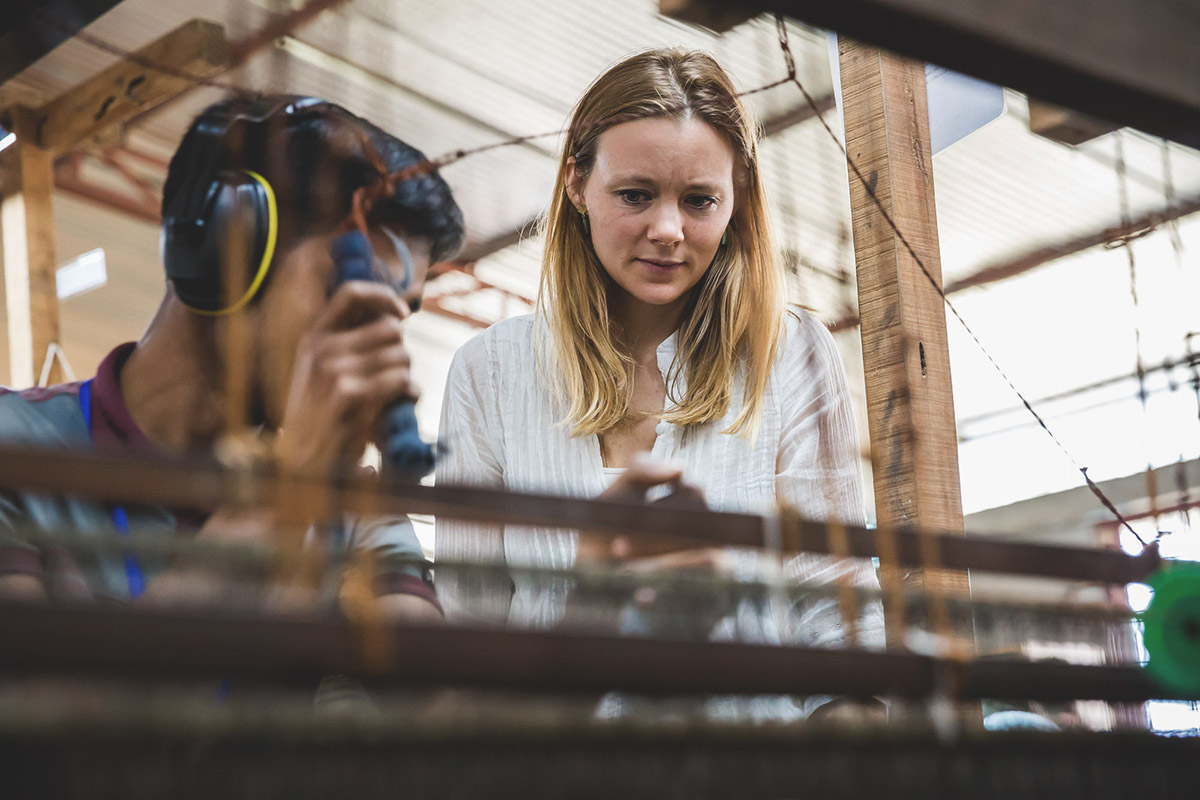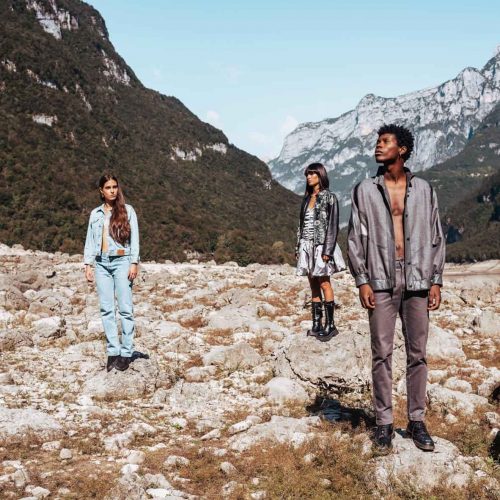Sustainability Talks: Interview with Marina Chahboune, founder of Beyond Fashion
What means circularity? What are the principles of the circular economy? How can we move from “take-make-dispose” economy towards “closing the loop? How can a designer start a circular business model?
Marina Chahboune is the Founder of a Sustainability Consultancy, Beyond Fashion. An expert in sustainable textile production, innovations and circular economy principles. Here she answers 5 questions about Circular Fashion
You have been working as a Sustainability expert for a long time, how has the fashion industry changed?
As a Sustainability Manager, I work mainly in the factories and I can definitely confirm that there have been a lot of positive changes throughout the years.Especially the Greenpeace report back in 2010 that revealed ‘the dirty secret behind jeans’, followed short after by the launch of the Detox campaign, have led to major efforts within the industry to start cleaning up their supply chains. The tragic collapse of the Rana Plaza building in Bangladesh has brought attention to the unhuman working conditions and social issues related to the production of our clothes and created awareness amongst consumers. Also social media have become an impactful platform, given consumers the chance to make more informed choices when shopping fashion, while putting brands under constant fear of serious brand reputation damages by publicly uncovering abuses in their factories. . This constant pressure from consumer side as well as new industry wide initiatives, campaigns and increasing governmental regulations in production countries have been key drivers for change. Global brands are now often requiring compliance with international standards, Code of Conducts and certifications from their suppliers. But the biggest challenge is still the lack of transparency. A lot of the big players work with agents and middleman, not knowing the factories that are producing for them beyond the garment manufacturing stage. How to ensure a clean supply chain, without knowing where your raw materials, yarns and fabrics are coming from and if your apparel manufacturing and finishing might have been outsourced to third parties? What I experience a lot while working at the factories is, that beyond the brands demands for certifications, there is very little effort and support for accompanying the mills within the transition process towards more sustainability. The implementation as well as the financial burden is mostly left to the mills own responsibility, while brands still continue to put enormous price pressure on the manufacturer and requesting too short lead-times.
"To fully create an industry that is not violating human rights, exploiting finit resources and polluting our environment, the current state of change is not enough: It needs an systemic change including new concepts of how we produce and consume our clothes".

For those who don’t know, what are the principles of the circular economy?
The central vision of the circular economy is to tackle two of the main negative effects of our current polluting production methods: waste and the excessive extraction of primary resources by decoupling economic growth from the usage of finit resources. Creating circular fashion means to design out waste by considering the products end-of-life in mind already during the stage of product development. It is about reusing what we already have, to disrupt the traditional concept of ownership and to eliminate the very concept of waste by recognizing that everything has a value.
.
"Just because it doesn’t have a value for you anymore doesn’t mean it might not be welcomed by someone else"
What guidance can you give for the transition from “take-make-dispose” economy towards “closing the loop?”
For CUSTOMERS
The first step is always to see how you can keep your product longer in use by treating it carefully. How do you wash it?, Can it be mended when it’s broken? Can you maybe re-design it, in case you don’t like the style or fit anymore?, And if you have reached the point where you really don’t want to keep it any longer: don’t throw it away, but give it back into available streams for reusage, such as take-back collecting points, clothes swapping, second hand sales, donations or handing it on to friends and relatives. Just because it doesn’t have a value for you anymore doesn’t mean it might not be welcomed by someone else.When in need of new clothes, one can for example consider borrowing, second-hand purchasing or renting as a first options, especially if it is only needed for a special occasion. And there are already some incredible brands out there offering clothes made from upcycled materials, with recycled fibers, made from zero waste patterns or with designs for modularity.
For BRANDS
It starts with research and making informed material choices for producing garments with longlasting, high quality and their end-of-life already in mind while designing them. Which waste- and reuse streams should the garment go into after the first user phase? How to extend the lifespan of a garment? How to create it so that components can be easily detached for recycling and which materials are best for recyclability or which process chemicals can’t be used to ensure biodegradability? Creating a product for circularity needs a change of mindset, a good understanding of the complexity of supply chains, material and chemical inputs in all components and an understanding of the requirements of existing and available waste- and reusage streams. , Unfortunately, our current education system, is not preparing emerging designers enough in the needed skills to make fashion circular. Most students have never visited a factory by the time they graduate from university.

"Creating a product for circularity needs a change of mindset, a good understanding of the complexity of supply chains, material and chemical inputs in all components and an understanding of the requirements of existing and available waste- and reusage streams".
How can a designer start a circular business model?
Best is to start with an assessment: who is your target group? Which product segment are you working in? Which materials are you using? Based on this, the most suitable concept for the integration of circular business practices can be developed. For example when targeting teenagers that have little budget to spend, but love to frequently have access to new styles and clothes, clothing rental might be a good option. Here the designer benefits from a longerterm customer-brand relationship, multiple revenue streams from one single item and better stock control. If you produce jeans – a product that is commonly longlasting and in long customer use – renting might not be the right circular fashion concept for you. In this case, it could be more interesting to focus for example on fiber recycling and garment repair.
Can you name some companies and designers properly recycling, up-cycling, re-using and re-designing.
I really love New York based brand Eileen Fisher. They take back their own collections from customers and re-design them, mend them or re-dye them with natural dyes, before reselling them again. Filippa K is also a very interesting example that is offering a variety of circular fashion concepts including second-hand sections in their shops. Po-Zu’s ‘Pace’-sneaker is Cradle-to-Cradle (C2C) certified made with a mesh from bio-based materials (https://po-zu.com), fully recyclable with a special cork sole while C&A launched the first ever C2C Gold certified jeans. There are already circular fashion options available throughout all product segments, from stockings made from 100% recycled materials by Swedish Stocking, to biodegradable underwear by Calida (https://www.calida.com) to beautiful fashion items made from deadstock fabrics by Reformation (https://www.thereformation.com) or off-cuts waste by Tonlé and Zero Waste Daniel, it just still requires some time to do a proper research before going shopping.
+ info: Beyond Fashion

+ Words: Julia Henry
Instagram: @ccfashionpack




